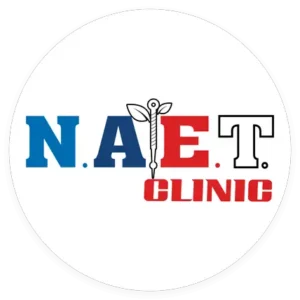Food sensitivities are becoming more prevalent, affecting millions of people worldwide. From mild discomfort to serious digestive issues, food sensitivities can disrupt daily life. If your love one or a close friend who constantly struggled with bloating and fatigue after meals but couldn’t pinpoint the cause. Then, despite trying different diets, she never found relief until she discovered NAET (Nambudari’s Allergy Elimination Technique), a holistic therapy that changed her life.
For people with food sensitivity, NAET may be a useful alternative. This approach offers a comprehensive plan for identifying and eliminating dietary sensitivities. Let’s examine how NAET therapy functions and the factors that are making it the go-to treatment for those seeking assistance with food-related issues.
Understanding Food Sensitivities: Difference Between Allergies and Sensitivities
It’s important to distinguish between food sensitivities and actual allergies. When the immune system triggers an allergic reaction, it can be severe and happen quickly. A person who has a peanut allergy, for example, may have hives, swelling, or even anaphylaxis. Although they are frequently less noticeable, food sensitivities, on the other hand, might result in delayed symptoms like fatigue, bloating, or headaches. In contrast to allergies, sensitivity may take hours or days to show symptoms and does not engage the immune system in the same manner.
Common Food Sensitivities
Food allergies that are most commonly reported include those to dairy, gluten, soy, eggs, and certain fruits, such as citrus. Food additives, preservatives, and even naturally occurring substances like histamines can cause responses in people. Because the symptoms might be subtle and delayed, pinpointing the exact trigger can be difficult. Common food sensitivities include the following:
- Dairy: People who are lactose intolerant may experience digestive problems due to lactose, a sugar present in milk and dairy products.
- Caffeine: A common ingredient in coffee, tea, and other drinks, caffeine sensitivity can cause symptoms including headaches, jitters, and irregular sleep patterns.
- Salicylates: Sensitive people may respond to these naturally occurring substances found in fruits, vegetables, and some drugs.
- Gluten: This protein, which is present in wheat, barley, rye, and triticale, can cause sensitivity in certain people, particularly those who have celiac disease.
- Amines: Found in fermented or aged foods like wine and cheese, amines (such as histamines) can cause migraines and other symptoms.
- FODMAPs: Short-chain carbohydrates found in various foods, FODMAPs can cause bloating, gas, and digestive discomfort in those with sensitivities.
- Sulfites: Often used as preservatives in dried fruits, wine, and processed foods, sulfites can trigger asthma-like symptoms in sensitive individuals.
- Fructose: A sugar found in fruits, honey, and certain sweeteners, fructose malabsorption can lead to digestive issues like bloating and diarrhea.
-
Symptoms of Food Sensitivities
Depending on the individual and the triggering meal, food sensitivities may show itself in a variety of ways. Typical symptoms include digestive problems such as constipation, diarrhea, gas, or bloating. Additional symptoms that are not related to digestion might include dermatitis, headaches, joint discomfort, or exhaustion. Even though these symptoms are not life-threatening, they can have a major negative influence on quality of life and may go years without being identified or misdiagnosed.
What is NAET? & How NAET Works For Food Sensitivities
NAET, developed by Dr. Devi Nambudripad in 1983, is a non-invasive, natural therapy designed to eliminate allergies and sensitivities. Dr. Nambudripad, who suffered from multiple food sensitivities herself, created NAET by combining principles from traditional Chinese medicine, acupressure, chiropractic techniques, and nutritional science. Her method seeks to correct imbalances in the body’s energy fields that cause sensitivities and allergic reactions.
- NAET is based on the idea that allergies and sensitivities are linked to energy blockages in the body.
- When we eat something our body perceives as harmful, it creates an energy imbalance that manifests as symptoms.
- NAET practitioners use muscle testing to identify the substances causing reactions.
- The therapy then employs acupressure or acupuncture on key meridian points to clear these energy blockages and “reprogram” the body to no longer react negatively to the substance.
One of the main benefits of NAET is that it offers a drug-free, non-invasive approach to addressing food sensitivities. Many patients report a reduction in symptoms after just a few sessions, and some experience complete desensitization to previously problematic foods. Since NAET treats the root cause rather than just masking symptoms, it may provide long-term relief. Additionally, it can address multiple sensitivities at once and even help with environmental or seasonal allergies.
The Pathway Of NAET for Food Sensitivities
1: Identifying Trigger Foods – Using muscle testing, a diagnostic method based on applied kinesiology, NAET assists in determining particular food sensitivities. The practitioner can identify which foods or allergies are causing the imbalance by measuring muscle strength after exposure to various substances. Those who have many sensitivities and need to pinpoint the precise triggers may find this technique especially useful.
2: Desensitization Process – The NAET desensitization procedure starts as soon as trigger foods are determined. In order to relieve energy blockages, the practitioner stimulates certain acupressure spots on the body while the patients are exposed to the allergen in a controlled setting. The sensitivity is progressively reduced or eliminated as a result of the body recognizing the food as safe. Every session concentrates on a single allergy or set of allergies.
3: Number of Sessions – Depending on the person and the amount of sensitivities they have, different numbers of NAET sessions are needed. After a few sessions, some people may feel better, but others may need 15 to 20 sessions, especially if they have complicated medical issues or many food sensitivities. In order to sustain the effects and guarantee that the body stays balanced, practitioners usually advise scheduling routine follow-up appointments.
Tips for Success with NAET for Food Sensitivities
To get the best results, it’s crucial to find a certified NAET practitioner who is experienced in dealing with food sensitivities. Look for practitioners who are listed on the official NAET website or have testimonials from clients with similar issues.
Keep a food journal prior to your NAET sessions and record any trends or symptoms that arise after consuming particular foods. The practitioner might use this information as a guide while conducting muscle testing. Before your session, make sure you’re properly hydrated and have had a small meal.
You can enhance your outcomes during NAET therapy by implementing minor lifestyle adjustments. A common recommendation from practitioners is to abstain from the problematic meal for twenty-five hours following each session. Maintaining a healthy diet and incorporating stress-reduction practices like yoga or meditation can also aid in the healing process.
NAET for Food Sensitivities: Addressing Common Concerns
NAET is considered safe for most people, including children and pregnant women. Since it is non-invasive and drug-free, the risk of side effects is minimal. However, like any therapy, its effectiveness can vary from person to person. While many patients report significant improvements, it’s important to consult with a qualified practitioner to determine if NAET is right for you.
NAET can be used alongside other therapies such as nutritional counseling or traditional allergy treatments. It’s always advisable to inform your healthcare providers of any treatments you’re undergoing to ensure that therapies complement rather than conflict with each other.
Conclusion – Naet For Food Sensitivities Target The Root & Offer an Effective Cure
With NAET, food sensitivities may be addressed comprehensively and effectively by treating the underlying causes of the body’s energy imbalances. NAET offers a viable alternative for those looking to reduce their food sensitivity symptoms because of its non-invasive methods, possibility for long-term treatment, and compatibility with other therapies.
Examine NAET as a possible remedy if food allergies are causing you problems. Perhaps it is the secret to eating without worrying about unintended side effects.
At The NAET Clinic, we specialize in various therapies, including food allergy supportive therapy, food allergy exposure therapy, oral food allergy therapy, and NAET food allergy therapy, offering validated approaches to address your concerns effectively.


